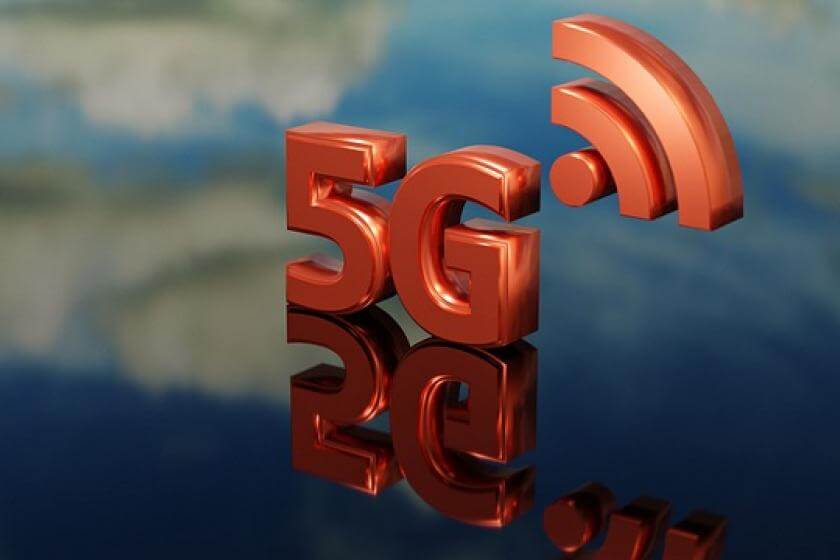

- Details
- Published on 15 March 2023
Why, Where, and When is There a Market for 5G NR RedCap?
(Source: Pixabay)
Until recently, 5G was focused on super high-speed networks. Now an effort has begun to expand it deep into IoT networks. Here's what IT planners need to know.
Creators see 5G New Radio Reduced Capacity (RedCap) as crucial to the emergence of the fifth generation of wireless telephony that has until recently focused squarely on super-fast data nets.
How? By attracting seas of IoT devices to 5G.
But some technology research and consulting firms see a bigger picture, viewing 5G NR RedCap as a reduced set of features that don’t clearly align with the needs of current and projected devices for deployments such as large sensor networks, industrial systems, and wearables.
For enterprise IT managers, the evolution of 5G beyond its early phases is paramount to their business and technology plans. But when it comes to NR RedCap, that evolution may not appear real for many years – and then be overkill for those seeking lower-speed IoT networks such as LPWANs.
What is 5G RedCap?
To date, 5G is known for its super-fast data throughputs, super-low latency, and features for super high-performance wireless networking. But seeking to bring 5G to the IoT masses, the architects created a new tier of reduced capability devices with lower speed, lower power, and limited functions. The planned lower tier of 5G, known as NR RedCap, began last year in Release 17 of the 3GPP worldwide standard.
“[RedCap] is critical for the broad adoption of 5G in IoT,” wrote Kiran Mukkavilli, Senior Director of Engineering, Qualcomm Technologies, in a blog post on the chip and module maker’s website. “[RedCap] can mean broader applicability, serving use cases in industry and enterprise verticals and consumer applications. NR-Light's capabilities and advantages also make it the ideal 5G technology for future-proofing new designs for mid-tier IoT use cases."
A need for speed?
5G RedCap delivers throughputs of 150 and 50 Mbps in the downlink and uplink, respectively. This is far below 5G's support for gigabits of throughput but still well above the capabilities of current NB-IoT (downlink of 26 Kbps and an uplink of 62 Kbps) and eMTC (Cat-M1) offerings which support a downlink of 58 Kbps and an uplink of 1.1 Mbps).
Creators hope RedCap means broader applicability for 5G and thus drives its emergence forward, in part by serving a broader array of use cases in industry and enterprise verticals and consumer applications.
Vendor materials on 5G RedCap use cases typically include:
- Industrial sensors, gauges, and actuators.
- Surveillance cameras (a core building block for smart cities and factories).
- Wearable devices, including glasses and watches: e-heath measurement and monitoring units.
In its annual Mobility Report, Ericsson sees value in an LTE-NR evolution.
It is worth mentioning that some of the wearable and video surveillance use cases are currently addressed by LTE-based solutions, the vendor wrote. “NR RedCap offers a path for migrating from LTE to NR for these use cases. Such a migration path is important as it can accelerate the spectrum re-farming from LTE to NR a number of years down the road.”
Closing the Price Gap?
With low-priced equipment a top priority goal for enterprises considering IoT networks, how can vendors hit the sweet spot needed to supplant current options with 5G RedCap?
Expecting enterprises to use 5G technology in their IoT networks has been a nonstarter because of the high price, leaving these entities to stick with or go with 4G options. But the creation of 5G RedCap, which has been stripped of functionality and technical complexity, could change the game going forward.
“The price gap between the 4G and 5G modules is one of the essential factors—if not the most crucial factor—that will continue to limit 5G adoption in IoT applications,” writes Omdia, a global technology research and analysis firm. “The 5G RedCap with reduced complexity will give hardware vendors a viable option to establish a 5G IoT device that can compete with its 4G counterparts in price.”
Is timing everything?
Since it’s early on, it’s difficult to try and put a timeline on the delivery of 5G RedCap-compliant products that carriers and enterprises can use in their networks.
The first 5G RedCap chipset will be commercialized in 2023, and mass production will begin in 2024, according to Techno Systems Research Co., Ltd.
Trying to create a lower complexity 5G New Radio device with the intent of doing for 5G NR what LTE-M and NB-IoT did for LTE is an interesting evolution. “However, with this iteration, and likely for at least a decade to come, it is highly unlikely to have a significant impact on the connectivity technology market landscape,” explained Matt Hatton, Founding Partner, Transforma Insights, a market research and analysis firm. "For the next decade, battery-powered cellular IoT will be dominated by NB-IoT and LTE-M."
Related articles:
